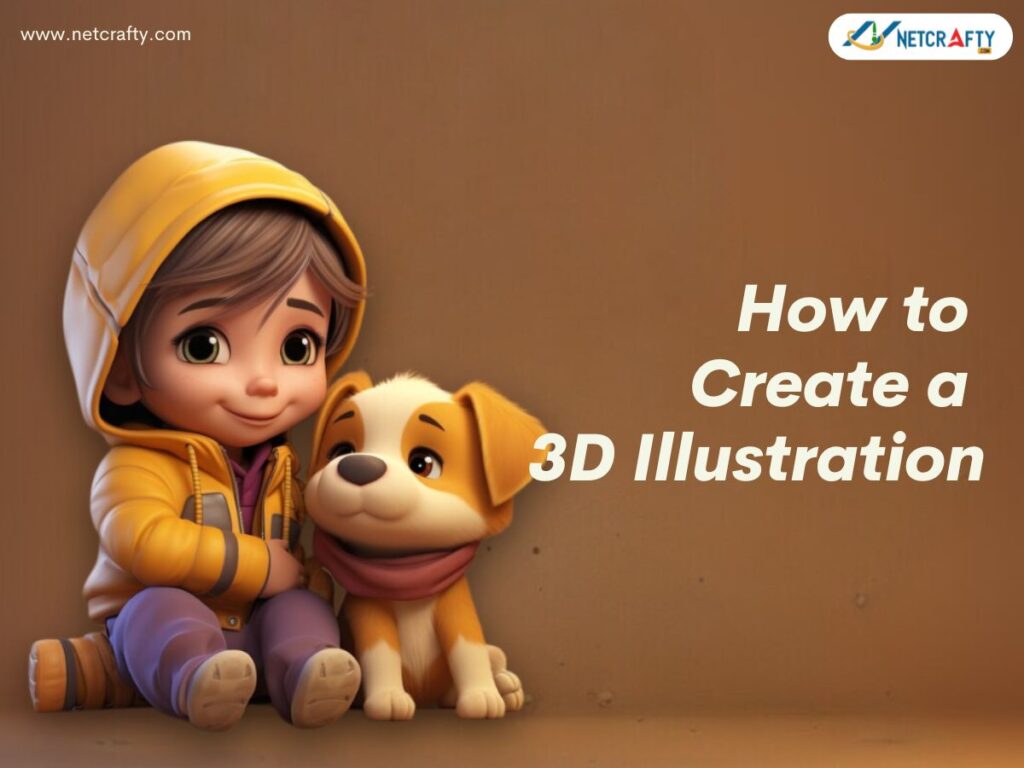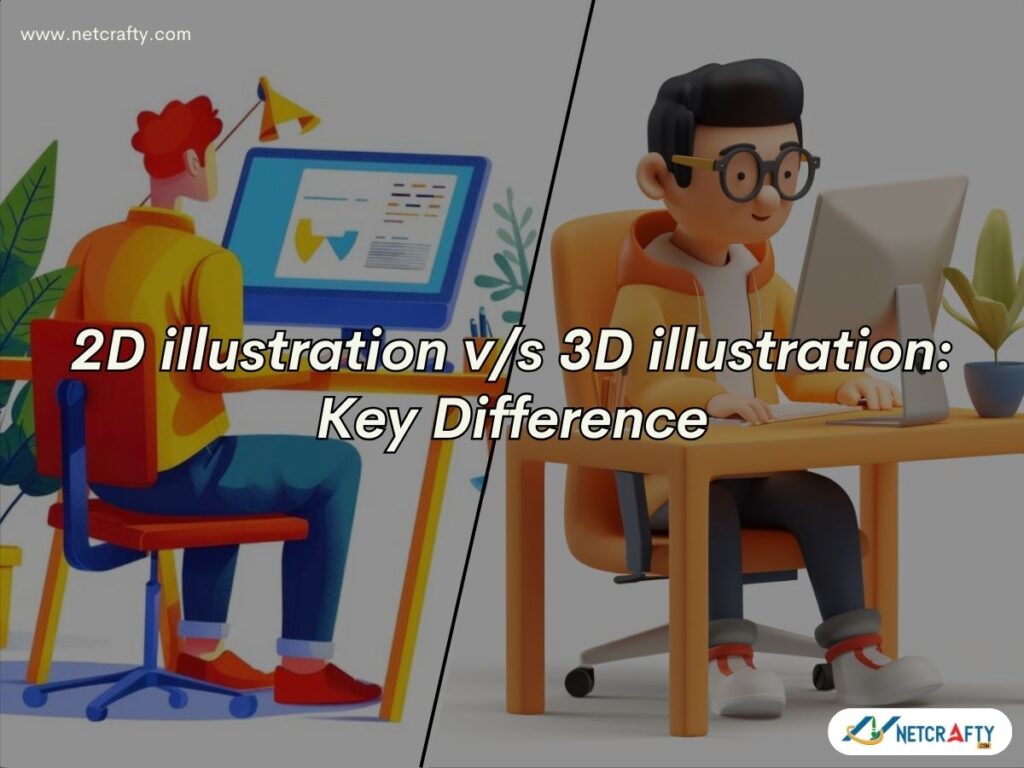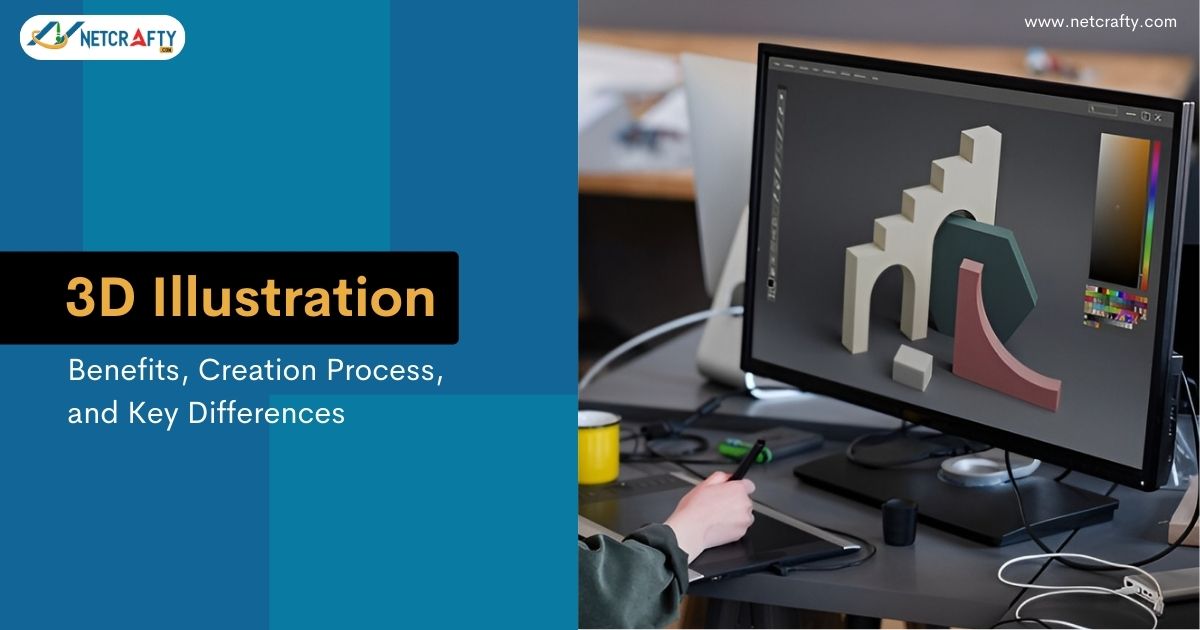3D Illustration is not an artistic trend. It’s a revolution in visual communication, shaping how we perceive and interact with digital environments. 3D illustrations are becoming an essential part of our daily visual landscape.
What is 3D Illustration?
The 3D Illustration is a digital artwork created using computer software that allows designers to generate graphics exhibiting depth, height, and width within three-dimensional space.
It is sculpted on a digital canvas, and each creation can exhibit realistic textures, lighting effects, and shadows. With this technique, objects that previously lay flat on paper stand tall against backgrounds that stretch far beyond any artist’s physical reach.
What are the benefits of employing 3D illustrations in design?
Illustration offers designers no limitations when bringing vision to life:
- This visual impact captures attention with its depth perception and realistic shadows.
- This can adapt to various industries beautifully.
- Communication clarity becomes more digestible when presented as related visuals.
- Once built, elements can be reused or altered without starting from scratch.
Where is 3D Illustration used?
3D Illustration, with its ability to provide detailed visual representations, has found practical applications across various industries. From architecture to product design, its versatility and realism make it an invaluable tool for creating compelling visuals. Here are some different fields in how it’s essential:
- Marketing and Advertising: Creates eye-catching content for ads and social media that can more effectively engage audiences. The virtual environment helps test and refine designs.
- Entertainment: 3D helps develop and create lifelike characters in entertainment. Visual effects add awe and realism to scenes, creating immersive experiences for audiences.
- Architecture: Architects and clients are allowed to see a realistic model of a building before construction begins. Virtual tours provide potential buyers with interactive properties.
- Product Design: Prototyping enables designers to create and test digital models before physical production.
- Healthcare and Medicine: 3D models of the human body assist in medical training and education by helping us understand the complex anatomical structures of diagnosis and surgery.
How to create a 3D illustration?

To create a 3D illustration that exists in the digital space, understanding the process of creating a 3D illustration follow these steps:
- Conceptualization: This is the main thing to consider before creating your artwork. Every designer begins with an idea of what you want in your final image to represent.
- Modelling: When you choose your software, start shaping primary geometrical forms into more complex models that resemble your concept.
- Texturing: Texturing is like painting your creation. You can add colours and details that bring realism or artistic flair here.
- Lighting: Lighting can also change mood and perception in Illustration. Plan and execute how light interacts with your scene.
- Rendering: Rendering is when all elements are computed together into the final image. This is a resource where your Illustration comes to life.
- Post-production: Tweaks and adjustments applied after rendering can improve visual effects or rectify minor issues, similar to glazing pottery.
2D v/s 3D Illustration: Key Difference

Here are a few techniques that lie in 3D Illustration and 2D Illustration:
- 2D visual dimension uses height and width to create images. It gives a more simplistic, traditional appearance. 3D illustrations appear more lifelike and realistic, giving a sense of volume and space.
- 2D Illustration using traditional techniques for creation. 2D using digital tools such as Adobe Illustrator or Photoshop to create a flat image. 3D Illustration using Blender software for creating wireframes, texturing, lighting, and rendering.
- Lighting is typically represented by lighting, and shadows are manually added to suggest depth in 2D Illustrations. 3D illustrators are more realistic because they are calculated based on light sources.
- The perspective of 2D Illustration is implied through techniques like linear perspective or scaling objects to suggest depth. On the other hand, 3D Illustration is inherently accurate, as the software automatically adjusts for viewpoint and depth based on camera settings.
- 2D produces simple designs quickly and is often more cost-effective. On the other hand, 3D illustrations are time-consuming and complex, requiring specialized skills in rendering and texturing.

Leave a Reply